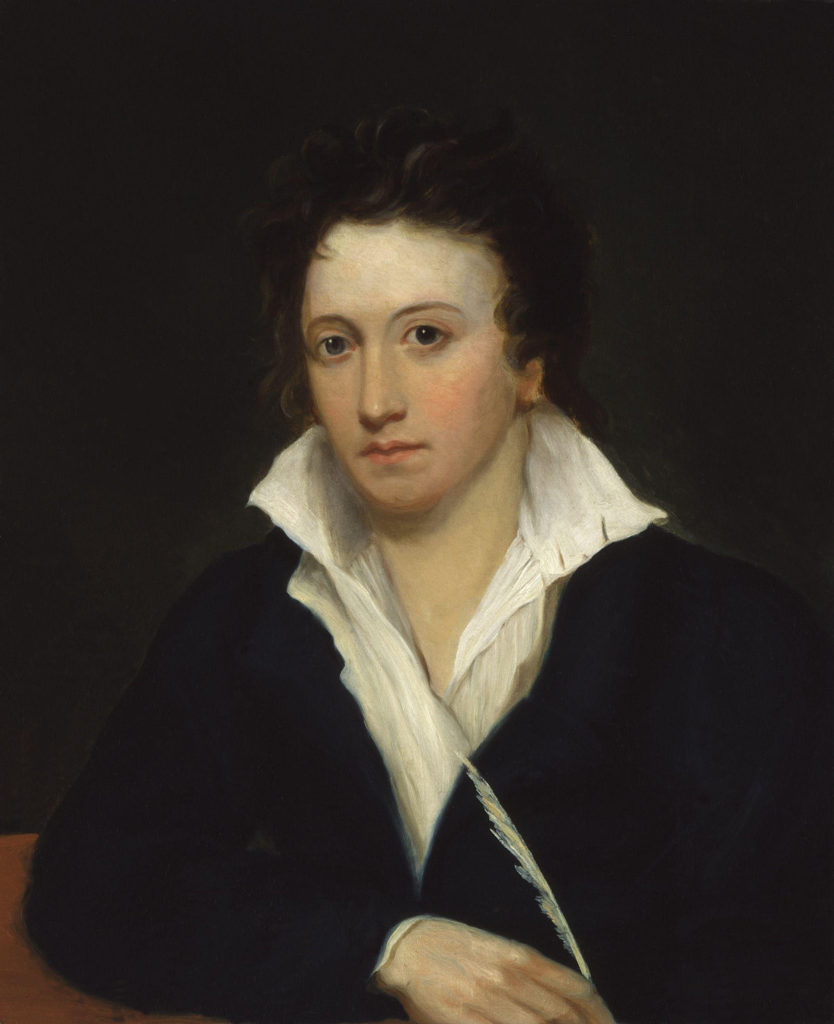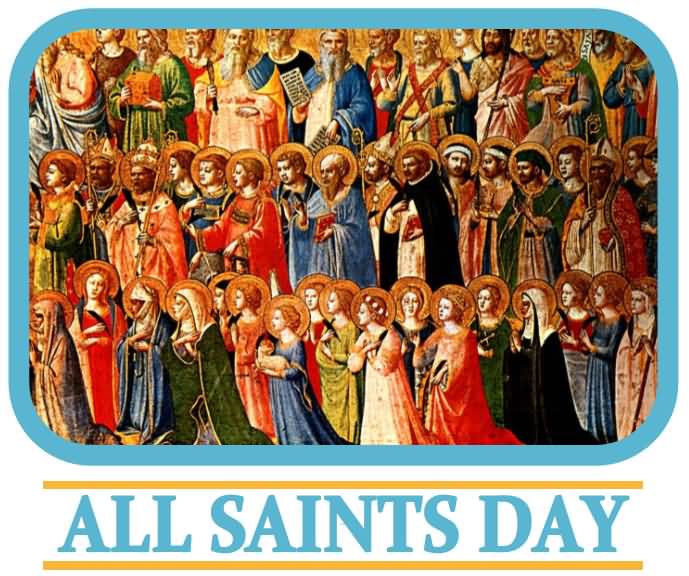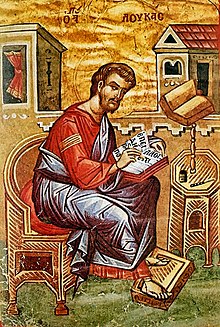The Rev. Noah Van Niel
Christ and St. Luke’s
November 13th, 2022
Proper 28 (C): Malachi 4:1-2a; Psalm 98; 2 Thessalonians 3:6-13; Luke 21:5-19
To listen to audio of this sermon click here.
Percy Bysshe Shelley was a 19th century British Romantic poet who lived only 30 years but, in that time, produced some of the most highly regarded poems in the English language. Perhaps his best-known poem is Ozymandias, a sonnet from 1818, which imagines the story of a ruined statue of a cruel and powerful King which now lies in pieces in the desert. You may have heard it before:
I met a traveler from an antique land,
Who said—“Two vast and trunkless legs of stone
Stand in the desert…Near them, on the sand,
Half sunk a shattered visage lies, whose frown,
And wrinkled lip, and sneer of cold command,
Tell that its sculptor well those passions read
Which yet survive, stamped on these lifeless things,
The hand that mocked them, and the heart that fed;
And on the pedestal, these words appear:
My name is Ozymandias, King of Kings;
Look on my Works, ye Mighty, and despair!
Nothing beside remains. Round the decay
Of that colossal Wreck, boundless and bare
The lone and level sands stretch far away.
I find this poem to be one of the most succinct and effective encapsulations of the reality of temporality; a poem which puts to lie the fiction we live by that if we just build it tall enough, if we just make it strong enough, it will somehow escape the ravages of time, and last for eternity. And yet each and every quest to do so fails. Our human endeavors are stamped with an expiration date, and time will make a fool of those who think otherwise.
I think of this poem every time we read the story of Jesus predicting the fall of the Temple in Jerusalem, as we just did this morning. Such a prediction comes in all three synoptic Gospels, Matthew, Mark and Luke at this time of year, as we are turning towards the end of story before starting again at the beginning in Advent. Jesus has come into Jerusalem for the last time, and of all the things he said and did during these final days, this prediction of the destruction of the Temple was one of the most shocking. For the Temple was the holiest place for the holiest people in the holiest city, in the holiest land. To predict its downfall was downright sacrilegious.
But of course, Jesus was right. He was right in the particular sense—the Temple was destroyed, in 70 AD. And never fully rebuilt. The most you can see of it now is the Western or “wailing” wall which is one of the most sacred sites for Jews in the entire world. And he was also right in the general sense. Like the poem, Jesus is reminding us of the temporality of all our human endeavors. No matter how well, or how strong, or how high, or how holy our buildings, even the most stable and sacred ones will eventually crumble to dust.
And while I might have chosen a different passage to help us complete our stewardship season this year (especially as we are trying to close out a capital campaign for a church which is adorned with many beautiful stones and gifts!), I think ultimately this passage is the right one for us today. It’s a good reminder of what has always been true: that this entire renovation has never actually been about the buildings. It’s always been about what happens in these buildings and what these renewed buildings could help us do. What we have asked you to invest in, with your prayers, and your patience, and your finances, is the creation and preservation of space that is meant to be used, whose intent was always to function because we believed not in our mortar but in our mission, not in our edifice but in our purpose. Buildings that are ends in themselves are idols, doomed to dust. But buildings that are used as tools, buildings that are used as places of transformation and connection, as places of help, of healing, of hope, of happiness, well they start to surpass their temporary nature, by bringing us in touch with things that are eternal. And that has always been the motivation behind all this construction: to create facilities that facilitate an encounter with the presence of the living God and give us the chance to continue to do something meaningful and helpful and good in this place for as long as these walls will stand.
Imagine with me, a Thursday a year from now. The day starts early, with dozens of 3 and 4 year -old’s getting dropped off at preschool for a full day using the magic of music and art for their learning and development. Soon after they arrive our devoted Lunch Ministry volunteers come into the new kitchen to start cooking a meal for our homeless and low-income neighbors. Those guests show up late morning and are served the meal at tables in a space that is now dignified, and dry, and welcoming. Meanwhile, over in the Parish House, the lunch hour sees a neighborhood group in need of meeting space holding their monthly gathering in one of our new rooms. Later that afternoon our parlor is filled with a group of parishioners coming for prayer and study. While parents taking a break from the hospital bedside of their sick child sit quietly in our garden to pray. Upstairs one priest is meeting with a widow to plan the funeral of her beloved husband while another is talking a new family through the baptismal rite and welcoming them to the church. Kathy is working furiously to prepare materials for our youngest children and plan the next event for our youth so that they may grow up secure in the knowledge that they are loved. Kevin and Marj sit around the piano in the new choir room debriefing after a night of rehearsals and planning the next season of transcendent music. And down in the church Bob, David and Vince are setting up for the inaugural Jim Sell Community Conversation which invites people from across the city to come together to learn and share about issues that are relevant to our collective well-being. Meanwhile Judie is keeping everybody in line and organizing it all. And before the lights are turned out for the day, our Thursday night AA meeting has slipped in and out of Lower Lloyd Hall so those who desperately need that support will have it, once again, available to them in a central location.
Friends, these are just some of the things that could be happening in this place, and they are the kinds of things our building should be about. It should be about welcoming, and worshipping, and helping and empowering. Those are things that transform lives because they are the things that transcend our temporality. And that is the purpose of the Church—to bring into being and put into practice those aspects of life which echo beyond its limits. If we’re lucky, this new building will have maybe another 100 years, and hopefully, if future generations are wise and prudent in their stewardship, even more than that. But we’d be lucky not because the building lasted, but because it would have given us that many more opportunities to love, and serve—to pray, and cry, and laugh, and sing. Many more opportunities to bring people in touch with God, and let that reality permeate their earthly existence. Yes, eventually, at some point, this church will be gone. But when the time comes that the waters rise too high, or the stones break and fall, we will have done something meaningful, something lasting, something of ultimate value in this place.
It’s really, not unlike the problem posed in each of our lives, except with more mortar. As Jesus is trying to make clear to the disciples, the question is not “When will the end come?” It is, “When it does come, will you be ready? Will you have done all you can to do something meaningful—not important but meaningful? Something that will transcend your life?” This is a highly personal question for Jesus at this moment. As he stands and looks at the Temple, foreseeing its destruction, he is also aware that in just a few days’ time, his own earthly life will be at an end. The Cross is rising on the horizon. So what does he choose to do with the time he has left? He teaches, he gathers, he feeds, he prays all, in an attempt to transmit something lasting to the people he has been given, in the place he has been given to do it, in the time that he has. This is our work. And this is the place we have been given to do it in, and the people we have been given to do it with, as well as we can for as long as we can. For if, in this place, we can foster things like love and community, wonder and beauty, caring and comfort, healing and hope then we will have brought something of the eternal into the temporal, something of heaven down to earth. And there could be no more worthwhile work for us to do with our lives.
The fate of Ozymandias awaits us all. One day this building will fall. What story will they tell about us when it does?



